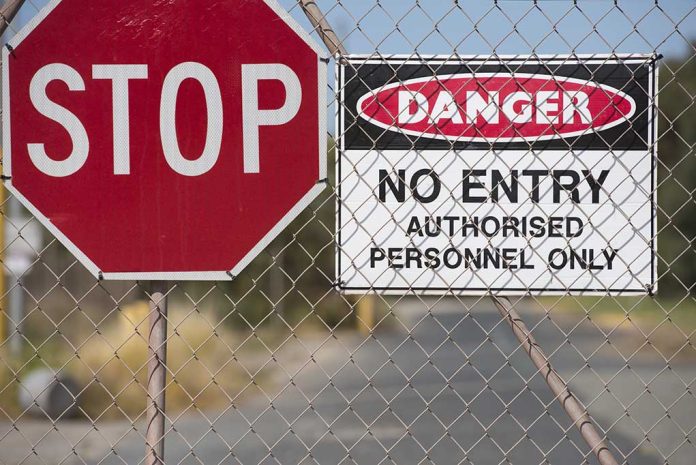
As deadly Asian needle ants invade 20 U.S. states, experts and citizens are reconsidering DDT for pest control despite its controversial environmental legacy.
Key Takeaways
- Asian needle ants have spread to 20 states since first being detected in Georgia in 1932, with their painful and potentially fatal stings posing serious health risks to those with allergies.
- These invasive ants are disrupting local ecosystems by outcompeting native ant species and affecting seed dispersal in forest understories.
- Climate change could expand the ants’ habitable range by up to 75% over the next 50 years, worsening their environmental impact.
- The revival of DDT as a control method has sparked debate between those seeking effective eradication and those concerned about potential environmental damage.
- Current management strategies include professional pest control using protein-based baits, though complete eradication remains challenging.
The Growing Threat of Asian Needle Ants
Asian needle ants have established a significant presence across America, now detected in 20 states from Washington to Florida. These small but dangerous insects, measuring less than a quarter inch long, deliver painful stings that can trigger life-threatening allergic reactions. First documented in Georgia in 1932, these invasive pests have rapidly expanded their territory throughout the Southeast and beyond, with Texas becoming a recent hotspot for infestations. Their small size and ability to blend into their surroundings make them particularly difficult to detect before an encounter occurs.
“It injects venom that can harm you. Its sting can be life threatening,” warns Dan Suiter, entomologist at the University of Georgia. “If you suffer from anaphylaxis, you should really know what this ant looks like. And it might be smart to carry an EpiPen.”
Ecological Impact and Identification Challenges
Beyond their threat to human health, Asian needle ants are wreaking havoc on native ecosystems. These aggressive invaders outcompete indigenous ant species critical to local biodiversity and disrupt natural processes like seed dispersal in forest understories. The ants’ carnivorous diet includes flies, beetles, and termites, further altering local food chains. Unlike many ant species, Asian needle ants don’t lay scent trails, making their colonies harder to track and eradicate. They typically establish colonies in leaf litter, rotted logs, and urban areas, including residential settings.
“They outcompete other ant species that are important to the ecology of that area,” explains Dan Suiter. “They’re pretty widespread on the East Coast. If you live in an area which is dominated by hardwood trees, there’s a good chance there are Asian needle ants underfoot.”
The DDT Debate: Weighing Control Options
The resurgence of these dangerous ants has sparked a controversial debate about potentially reintroducing DDT as a control measure. DDT, once widely used as an insecticide, was banned in the United States in 1972 due to concerns about its environmental persistence and impact on wildlife. However, with the escalating threat posed by Asian needle ants and their projected expansion due to climate change, some pest control experts and concerned citizens are questioning whether limited, targeted use of DDT might be warranted to combat this specific invasive species.
“Imagine somebody inserting a needle directly into your flesh. It’s a very sharp, acute pain but it’s quite local,” describes Benoit Guénard, an expert on invasive ants. “People are most often stung when they’re working in their garden. Nobody likes to be putting in their bedding plants and then suddenly have unexpected pain.”
Current Management Strategies
While the DDT debate continues, experts recommend several management approaches for dealing with Asian needle ant infestations. Removing mulch from around foundations, elevating woodpiles, and careful inspection garden materials can help reduce nesting sites. Professional pest control services using protein-based baits targeted specifically at these ants offer the most effective current control method. These baits work by slowly diminishing colonies as ants carry the poison back to share with nestmates and queens. However, complete eradication remains unlikely given the ants’ widespread distribution.
“The whole idea of a bait is you give them a granule, they eat it, they share it with their nest mates and the Queen [ant], and you get a slow decline of the colony,” explains Dan Suiter. “In 25 years, I’ve had one phone call from an individual who was stung by a fire ant and suffered anaphylaxis, another one by something called a twig ant. When I start getting calls annually about people who have been stung by an Asian needle ant, it says to me that there’s a trend there.”
Looking Ahead: The Balance Between Control and Conservation
The Asian needle ant invasion exemplifies the complex challenges facing President Trump’s administration in balancing environmental conservation with public safety concerns. With climate models predicting a 75% expansion of these ants’ habitable range over the next five decades, developing effective control strategies is increasingly urgent. While the debate over DDT remains contentious, it highlights the difficult trade-offs in pest management: weighing immediate threats against long-term environmental impacts. For now, vigilance, education, and targeted control measures offer the best defense against this growing invasive threat.
“There are other ant species in the Eastern United States that superficially resemble Asian needle ants, so it takes an experienced eye to positively identify them,” notes the U.S. Forest Service, underscoring the importance of proper identification in managing this emerging threat to American ecosystems and public health.



